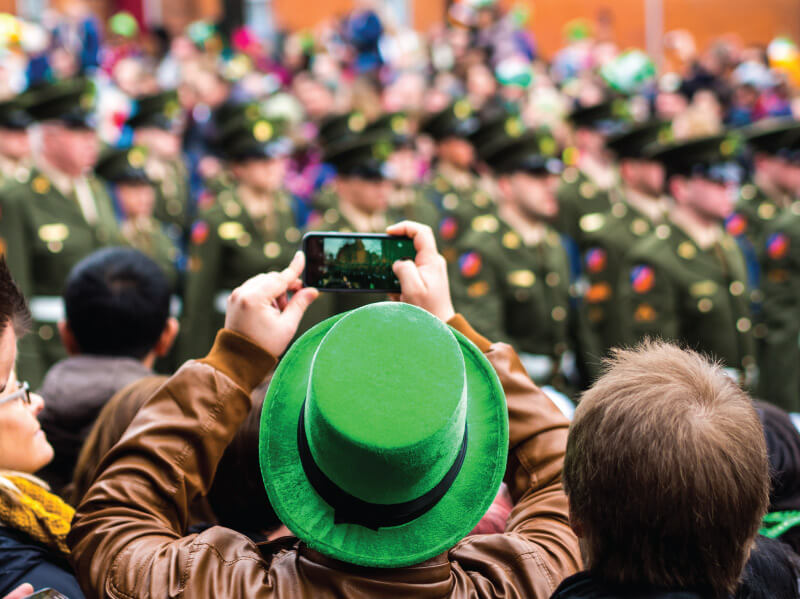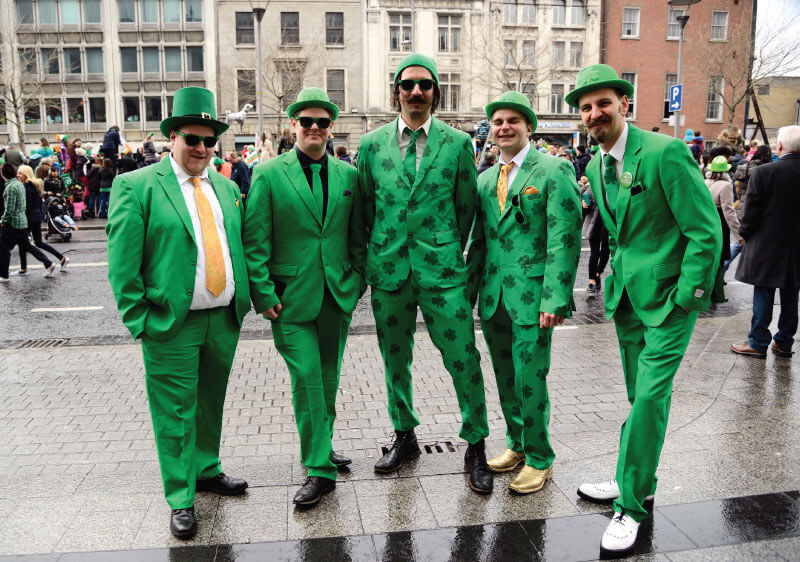You’ll know it’s St. Patrick’s Day once you see four leaf clovers, gallons of Guiness, and green everything pilling up in every corner of the country. But have you ever paused and thought about the origin of this celebration? Did you know that the beginnings of this holiday dates back more than 1,500 years?
Before it was associated with greens, parades, drinking, and merriment, the Irish have observed St. Patrick’s Day as a religious holiday for more than 1,000 years. It falls during the Christian Lent season, where Irish families traditionally go to church in the morning and celebrate in the afternoon.
Since it was part of the Lenten season, eating meat was prohibited. However, it was waived, and since then, people would drink, dance, and feast on traditional Irish meals!
Who was St. Patrick?
Saint Patrick is the patron saint and national apostle of Ireland who lived during the fifth century. He was born in Roman Britain but was kidnapped by Irish raiders and brought to Ireland as an enslaved person to a Celtic priest when he was 16 years old. After working for six years as a shepherd, he escaped and returned to Britain but went back to Ireland as a Christian missionary. Saint Patrick was credited for introducing Christianity to the Irish people.
After Saint Patrick’s death, which is believed to be on March 17, 461, the mythology about his life became even more entrenched in the Irish culture. Perhaps one of the most well-known legends about Saint Patrick is that he explained the Holy Trinity using the shamrock (native Irish clover) as a metaphor.
When was the first St. Patrick’s Day observed?
Ever since the ninth or tenth century, the Irish have been observing the Roman Catholic feast day of St. Patrick on March 17. However, the first parade took place in America on March 17, 1601, rather than in Ireland, as records show. It took place in a Spanish colony in what we now know as St. Augustine, Florida. Both the parade and St. Patrick’s Day celebration held a year earlier were organised by Ricardo Artur, the Irish vicar of the Spanish Colony.
A century later, on March 17, 1772, homesick Irish soldiers serving in the English military marched in New York City to honour the Irish patron saint. Since then, the enthusiasm about the St. Patrick’s Day parades grew.
How is Saint Patrick’s Day celebrated now?
In the Ireland & The United Kingdom, depending on where you are, the degree of celebration varies. For some cities, it’s like a normal workday. No festivities or parades but some would still visit their local Irish pub for a beer. However, in Ireland and cities with a large Irish population like London and Nottingham, parades, festivals, and performances are held. In some places, the merriment will go on for two (Nottingham) to three (Liverpool) days.
In London, the celebration lasts for a week with the usual parades and festivals held near St. Patrick’s Day (March 17, 2022) but not usually on the day itself. The parade and festivals would enable people to experience Irish culture which includes music, food, dance, crafts, and more!

Why are Leprechauns Associated with St. Patrick’s Day?
You can never miss the leprechauns when talking about the Irish holiday, but why? Leprechauns in the original Irish folklore are called “lobaircin”, which means “small-bodied fellow”. It probably started from the Celtic belief in tiny men, fairies, and women who could use their power for good or evil. In the Celtic folktales, leprechauns were cranky souls tasked to repair the shoes of other fairies.
St. Patrick’s Day Legends Debunked
There are many legends and myths surrounding St. Patrick’s Day. So, before your start opening the kegs and simmering the meat, let’s get our facts sorted by uncovering some misconceptions about the well-celebrated holiday.
Saint Patrick was Irish
As we said before, Saint Patrick was not Irish since he was born in Roman Britain to a Christian deacon and his wife at around year 390. Then, you know the story. He was kidnapped, brought to Ireland, became an enslaved person for six years, fled to England, and returned to Ireland to serve as a missionary.
Saint Patrick was British
Although Saint Patrick was born in Britain, he technically may not be a Brit. In his lifetime, the British Isles were inhabited by the Romans, a group where Saint Patrick’s parents were included, making him a member as well. No one knows whether his family (thought to be part of the Roman aristocracy) was an indigenous Celtic descent or originally from modern-day Italy.
In the two surviving documents attributed to Saint Patrick, he wrote in Latin and signed his name as “Patricius”. However, according to some accounts, his birth name was Maewyn Succat.
Saint Patrick introduced Christianity to Ireland
In 432, before Saint Patrick became a missionary in Ireland, Pope Celestine apparently sent a bishop identified as Palladius “to the Irish believing in Christ”, indicating that some people on the Emerald Isle had already been converted.
One theory says that the St. Patrick of Iore is, in fact, a combination of two men, Palladius and Patrick, the son of a deacon who first came to Ireland as an enslaved man.
Saint Patrick exiled snakes from Emerald Isle
There was a legend that while Saint Patrick was standing on an Irish hillside, he delivered a sermon that drove the serpents on the island into the sea. While it’s a fact that Emerald Isle remains snake-free, chances are that has been the case for a very long time.
Ireland has been surrounded by water since the end of the last glacial period, preventing the snakes from crawling in. Before that, the place was covered with ice which is too cold for them. Scholars believe that the snake’s story is a metaphor for Saint Patrick’s eradication of pagan beliefs.
St. Patrick’s Day has been historically associated with the colour green
Yes, the Irish countryside is indeed filled with many shades of green. However, the knights in the Order of St. Patrick wore a colour recognised as St. Patrick’s blue. So, why did the green become an emblem of St. Patrick that people even dyed the Chicago River in that colour to commemorate the holiday he inspired? This probably dates back to the 18th century, when the supporters of Irish independence used the colour green to embody their cause.

So, that’s some of the bits and pieces about St. Patrick’s Day that you need to know! If you ever need some green strip lights to liven up your place and kick start the celebration, you can visit our website, Simple Lighting! Aside from the strip lights, we also have other colours and an RGB or RGB +WW option.













